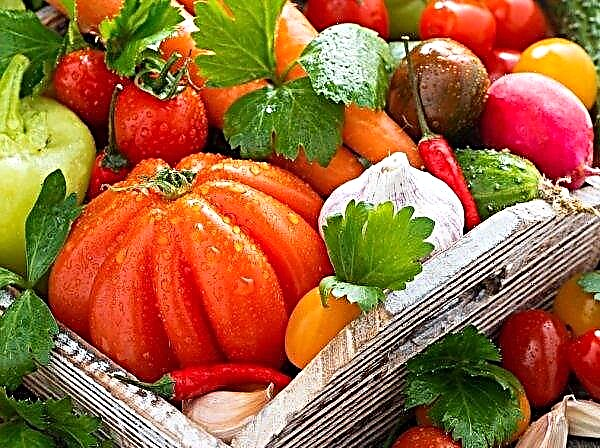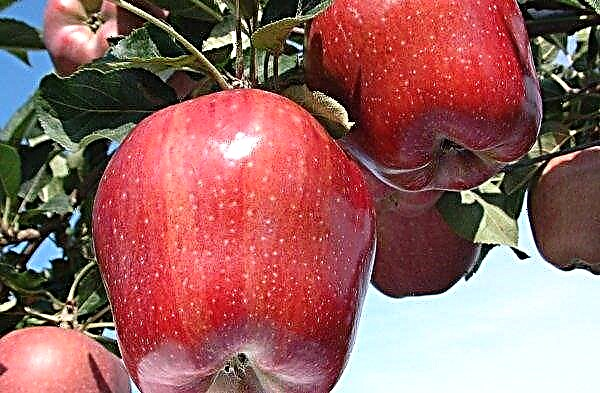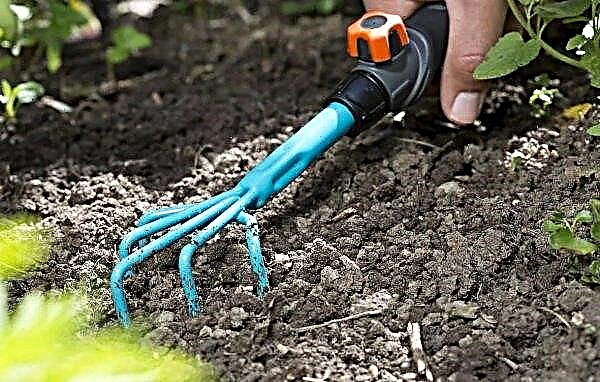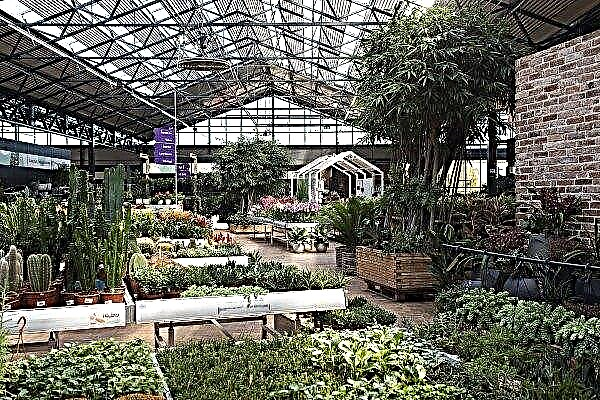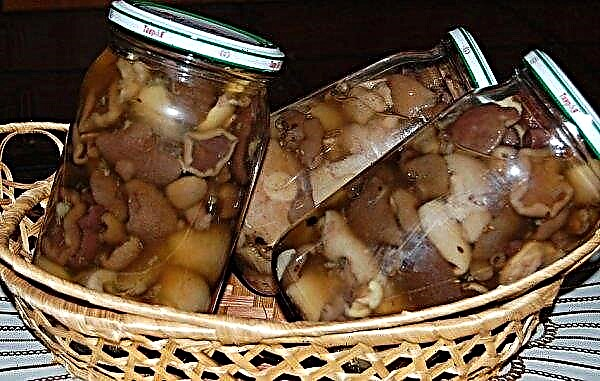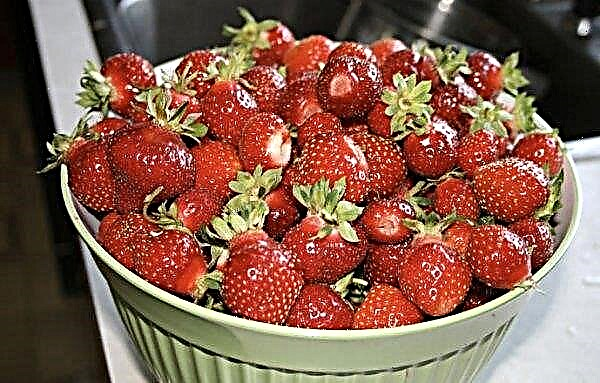When choosing seeds or seedlings of tomatoes for planting on the site, experienced gardeners pay attention to the quality of the fruits, their versatility of use, adaptability to local weather conditions and, of course, productivity. In our article, we will consider a detailed description and features of growing the hybrid “Royal Temptation f1”, which meets all the basic requirements for high-quality tomatoes.
Description
Like any other hybrid, the “Royal Temptation f1”, has its own characteristics of the appearance of bushes and fruits, is distinguished by its taste and the ability to use for processing, so we will consider its detailed description.
Did you know? For the first time, the tribes of native Indians in South America began to grow tomatoes 9 thousand years ago and called them “tomato”, which means “large berry”.
Features of the “Royal Temptation f1”:
- early ripe indeterminate hybrid;
- grown in sheltered and open ground;
- refers to high-yielding hybrids;
- the first inflorescences are laid already over the 7-9th leaf;
- characterized by the presence of a peduncle with articulation and long sepals.
Advantages and disadvantages
Consider what advantages and disadvantages emit experienced gardeners in the process of growing a hybrid.
- Advantages:
- high fruit ripening rate;
- good resistance of the hybrid to diseases;
- meatiness of the fetus due to the small chambers of the seed sections;
- the versatility of tomatoes;
- high productivity.
- Disadvantages:
- fruits often suffer from cracking;
- the bushes require garter, since the large weight of the fruit is able to lay branches on the ground;
- the bush reacts to the ripening of fruits in the shade by a deterioration in taste;
- grows poorly in the northern regions.
Sowing seeds for seedlings
Acquired tomato seeds to obtain a large and high-quality crop must be correctly sown for seedlings, taking into account certain nuances.
Optimal timing
Usually seedlings of early hybrids are recommended to be planted in a greenhouse in the 10th of April, therefore, sowing seeds for seedlings is carried out in early March. In order to correctly calculate the time of sowing, it is necessary to take into account that seedlings appear within a week after sowing, the plant begins to bloom 55-60 days after sowing.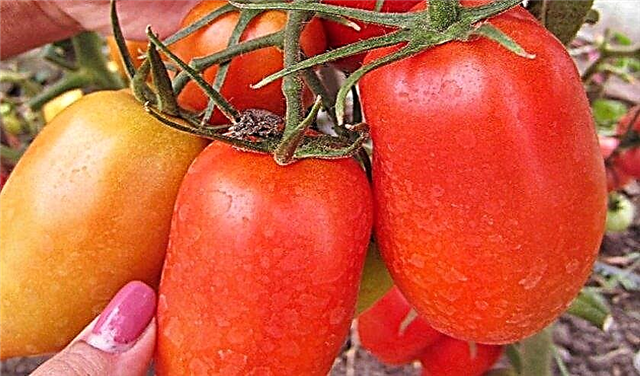
Soil mix
For the preparation of the soil mixture, it is recommended to use 2 parts of peat, 1 part of the land from the garden, 1 part of sand and 0.5 parts of humus. Before using the soil mixture, it is pre-sieved and disinfected.
A steamer is suitable for disinfection, which allows you to kill almost all pathogenic bacteria and fungal spores, as well as weed seeds. Disinfection is carried out 10 days before using the soil so that beneficial bacteria appear in it. Ready soil is characterized by friability, good breathability and moisture capacity.
Important! To improve breathability, crushed dried sphagnum moss is added to the steamed substrate.
Capacity for growing
Seedlings are grown in wooden boxes, individual plastic cups or peat pots (tablets). In a peat tank, doing this is much more convenient, since each pot is then simply buried in the soil, without first freeing the root system.
Plastic glasses are also quite convenient to use, as they can be gently cut and, without destroying the earthen lump, planted in the soil.
You must choose what capacity to use for sowing seeds on your own, based on personal preferences and the financial side. The cheapest way is to use standard wooden crates, which are in any household, a little more expensive, but more convenient - plastic glasses.
If you spend a little money and get peat tablets or pots, then the process of planting seedlings in a greenhouse is much easier.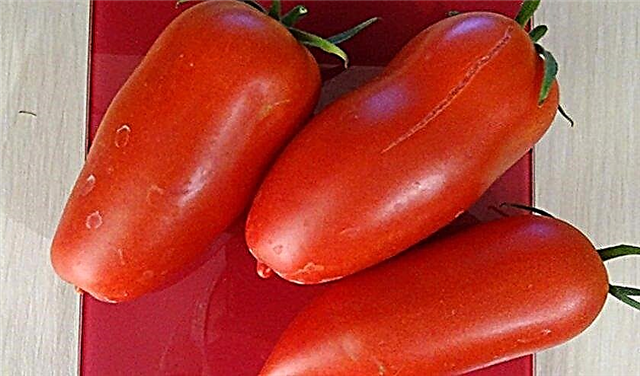
Seed preparation
As a rule, the seeds of hybrids are sold quite high-quality, therefore, special culling manipulations are not necessary. To obtain good seedlings, the seeds are pre-treated with disinfectants and growth stimulants.
A popular way to disinfect seeds is to treat the material with a 1% potassium permanganate solution. To do this, a disinfecting solution is poured into a glass jar and the seeds are immersed in it for 20 minutes. After processing, thoroughly rinse and dry the seeds.
To increase productivity and stimulate the growth of the terrestrial part of the plant, it is recommended to treat the seeds with purchased products, such as Epin or Immunocytophyte. Use these products in accordance with the instructions on the packaging.
After processing, the seeds should be dried by laying on a paper towel for 1-2 days.
Important! Rinse the seeds after treatment with growth stimulants is not necessary.
Sowing seeds
It is recommended to sow tomato seeds as follows: the container is filled with prepared soil, small grooves are made in it with a depth of 1 cm. 2-3 seeds are sown in individual containers, keeping a distance of 2 cm between them.
When sowing in a box, make long furrows every 4 cm, in which the seeds are laid out, keeping an interval of 2-3 cm between them.
Seedling Care
Within 1 week after sowing the seeds, the containers are tightened with a film or covered with a transparent cap. At the same time, a temperature of about +25 ° C should be observed in the room.
When you notice the first entrances, you need to remove the film and begin to create comfortable conditions for seedlings. To do this, reduce the temperature in the room to +18 ° C, set the capacity on the window to compensate for the lack of sunlight.
Daylight hours for tomato seedlings should be maintained for 12 hours, so fluorescent lamps are used to organize additional lighting.
At first, while the seedlings are still very small, they do not water the soil, but only spray it with a spray gun to exclude poor development of the root system of the tomatoes. For spraying use only boiled or settled warm, about + 20-25 ° C, water.
Before the first full leaves appear, it is recommended to spray 1 time per week. After the appearance of 2-3 full-fledged leaves, seedlings can be started to be watered under the root and make sure that water does not fall on the ground part of the plant.
10 days after the appearance of the first true leaves, watering is carried out, adding light top dressing to the water using complex fertilizers with a high nitrogen content. The nutrient solution is prepared on the basis of potassium salt (1.5 g), urea (0.5 g) and superphosphate (4 g), dissolving top dressing in 1 liter of water. Water 2 times a week.
Seedling hardening
7 days after the emergence of seedlings, the seedlings begin to temper, so that in the future it normally responds to temperature changes. For this, the air temperature in the room should be regularly reduced: during the day from +25 to +18 ° С, and at night - from +18 to +13 ° С.
In addition, hardening is also carried out by airing the room, initially opening the window for 15 minutes and increasing the amount of time up to 4 hours.
Planting seedlings in a permanent place
Seedlings are planted in open ground when the soil has already warmed up sufficiently (to +15 ° C), and the air temperature will remain at +20 ° C during the day. If the site where the seedlings are planned to be planted is located in the southern region, the seedlings are planted in mid-May, and in the northern region at the end of May.
Seedlings are planted in the greenhouse in mid-April.
The seedling planting time can be determined based on the external characteristics of the plant: height - 20–25 cm, stem thickness - 5–7 mm, number of leaves - 7–9. Each plant is planted at a distance of at least 60–70 cm from each other, maintaining a gap between rows of about 70–80 cm.
How to care
Having planted seedlings at a constant place of growth, it is necessary to take care of the plants, on which the quantity and quality of the crop will depend.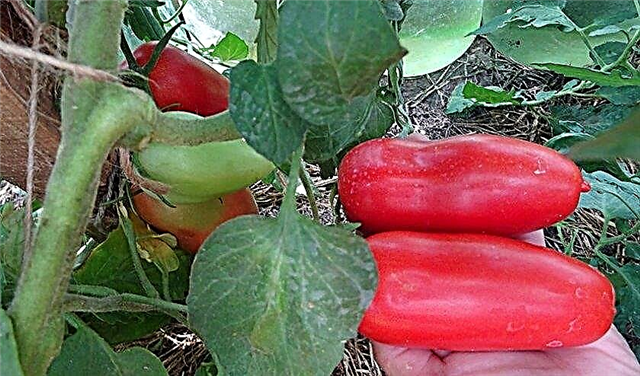
Watering
Tomatoes are crops that do not tolerate both drought and severe waterlogging of the soil, so it is necessary to water the plants when the top layer of soil is slightly dry. In the absence of rain, tomatoes are watered 1 time per week, with water at room temperature under the root.
With regular rainfall, watering is reduced to 1 time in 2-3 weeks.
Top dressing
Tomatoes are fed at least 3 times, but it is better to do this every 2 weeks. Fertilizers are used with a high content of nitrogen, phosphorus and potassium. Approximate feeding composition: ammonium nitrate (15 g), superphosphate (50 g), potassium chloride (40 g) per 10 l of water.
Also, once every 2 weeks they are fed with magnesium, and when the first flowers appear - with boron.
Stepson
Paschinkovanie tomatoes produce to increase the yield of the bush. If the region is southern, then leave 2 shoots, on which the ovary for a long warm period has time to ripen.
In the northern regions, only one central shoot is left, since the extra ovary on additional shoots, not having time to ripen before the first frost, will serve as unnecessary weight and take away the nutrients necessary for the plant.
All excess shoots that are formed on the main stem of the tomato must be removed on time, breaking them off with your hands. It is not necessary to break off the entire shoot, but to leave small “stumps” of 5 cm in size: they will be an obstacle to the formation of new unnecessary shoots. The first stepsons can appear on tomato seedlings even before they are planted in open ground, so they are recommended to be removed in a timely manner. The stepsoning procedure is usually carried out in the morning, when the street is warm and sunny.
The first stepsons can appear on tomato seedlings even before they are planted in open ground, so they are recommended to be removed in a timely manner. The stepsoning procedure is usually carried out in the morning, when the street is warm and sunny.
Important! If it’s cool and damp on the street, you cannot pinch tomatoes, as the plant can be infected by infection through the wounds.
Soil care
Regularly, the soil around the tomato bushes should be weeded to remove weeds on the bed that interfere with the normal growth of the crop. Weeding should be carried out depending on the intensity and frequency of emergence of weed vegetation.
As necessary, weeds are removed by carefully tearing them out with the root, being careful not to damage the root system of the tomatoes.
It is necessary to loosen the soil after each watering - to restore normal aeration and the penetration of nutrients in the process of top dressing to the root system.
Also, experienced gardeners often resort to mulching so that moisture lingers longer in the soil, and tomatoes ripen faster. As mulch use straw, peat or sawdust. Mulch is laid around each bush with a layer of 2-3 cm.
Bush tying
The bush of the tomato hybrid “The Royal Temptation f1” grows high, so it must be tied up, because over time, under the weight of the fruit, it can completely “lie” on the ground, the fruit will ripen poorly, and may begin to rot due to excess moisture. Usually they tie up in the simplest way: next to the plant, a support is installed - a metal or wooden stake, to which the top of the bush is tied. A more effective, but time-consuming method is to install trellises, on which the wire is pulled and the tops of the bushes are tied to it.
Usually they tie up in the simplest way: next to the plant, a support is installed - a metal or wooden stake, to which the top of the bush is tied. A more effective, but time-consuming method is to install trellises, on which the wire is pulled and the tops of the bushes are tied to it.
You can tie the bushes in a linear way, which consists in installing columns on both sides of each row. A wire is pulled between them, then around the perimeter of the wire, a strong thread is tied over each bush, to which the top of the bush is tied.
Preventative treatment
Often tomatoes are affected by late blight, therefore, preventive treatment of plants is mandatory. For this, fungicides of systemic contact action are used, spraying them with plants once every 20 days.
Popular processing tools:
- "Ditan M-45";
- "Infinito 61";
- "Quadrice 250".
Did you know? Tomatoes came to Europe in the middle of the XVI century, when the Portuguese brought an unusual plant to the continent as an ornamental, and the fruits were considered poisonous for a long time.
Means are used according to the instructions on the package. So that tomatoes are not affected by gray rot, they are treated with fungicides - “Fundazol”, “Switch”, in accordance with the instructions on the package. From alternariosis, tomatoes are sprayed with Bravo 500, Quadrice.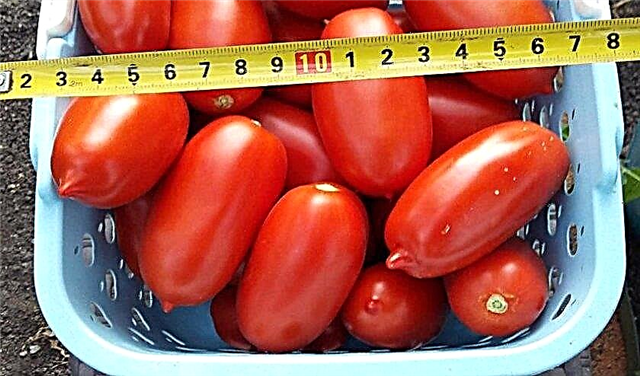 Thus, the hybrid “Royal Temptation f1” is very popular for cultivation. It is not demanding on growing conditions and is characterized by ease of care, so the minimum cost of effort, time and money will be fully justified when choosing these tomatoes for growing.
Thus, the hybrid “Royal Temptation f1” is very popular for cultivation. It is not demanding on growing conditions and is characterized by ease of care, so the minimum cost of effort, time and money will be fully justified when choosing these tomatoes for growing.


